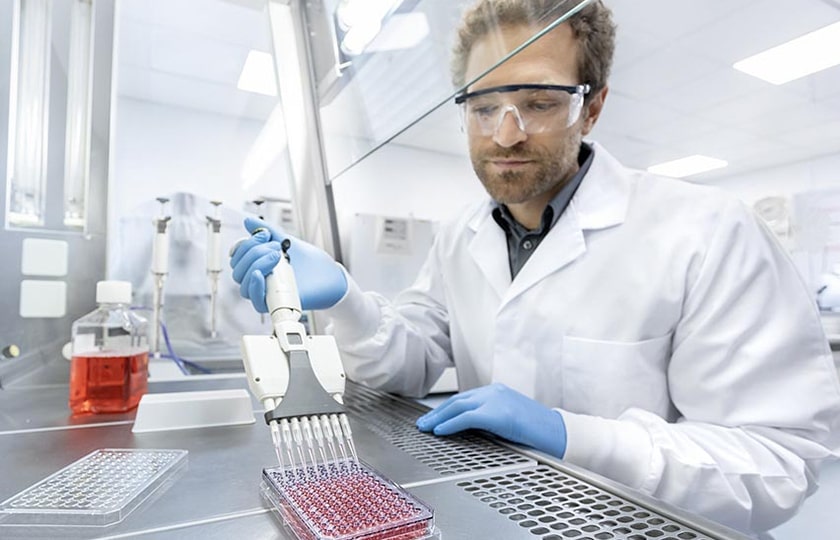Bridging the Gap Between In Vitro and In Vivo in HTS assays
In this article, we address the benefits of having cells behave more naturally for your high-thoughput assay and specifically look at the use of air lift cultures.
“Ideas are like fish. If you want to catch little fish, you can stay in the shallow water. But if you want to catch the big fish, you’ve got to go deeper. Down deep, the fish are more powerful and purer. They’re huge and abstract. And they’re very beautiful.”
- David Lynch, Catching the Big Fish: Meditation, Consciousness, and Creativity
In many ways, drug discovery is like catching the big fish. You've got to go deep. The task is huge and abstract. And if it leads to a significant breakthrough, it is very beautiful. No one can do it alone. We will help you navigate the deep waters of cell and tissue cultures for high-throughput assays.
Cell and tissue cultures for high-throughput assays
Cell and tissue cultures have become indispensable techniques for life science and medical research. As the behaviors of cells correspond to the properties of their local microenvironments, it is crucial to closely mimic these environments to effectively support various applications such as drug discovery, toxicology studies, and basic research. Cell culture inserts with porous membranes have become an essential tool, as they offer a unique way to study cellular behavior and interactions under conditions that better resemble those in vivo. The system consists of a permeable membrane that separates two compartments, enabling the exchange of molecules. Cells can be cultivated on the membrane, while various conditions such as growth factors or drug candidates can be applied to each compartment. This arrangement facilitates the creation of intricate 3D environments which more accurately simulate the in vivo environment than conventional 2D cell culture.
A prominent example: Air-liquid interface (ALI) cultures as physiologically relevant model systems
If you want to capture some really big fish, your model system should mimic reality as closely as possible. The air lift system provides significant advantages to epithelial cell models for studying the respiratory tract. The epithelium of the human respiratory tract is the first line of defense against pathogens, air pollution, and allergens. To understand how these environmental agents affect respiratory tissues and develop effective treatments, a physiologically relevant model system is necessary. Conventional submerged cultures fail to represent the complex morphology and functions of the human airway in vivo. Moreover, primary cell models from animals have a limited experimental window and are not comparable enough to human systems. However, using ALI cultures of human primary airway epithelial cells, grown in an air-liquid interface facilitated by permeable inserts, overcomes these limitations.
Air-liquid interface (ALI) culture and COVID research
ALI cultures have been proven to be a valuable tool in studying the pathogenesis of coronavirus infections, especially in the wake of the COVID pandemic, where there has been an urgent need for research to develop new agents and understand viral biology. Such cultures are employed to model various mechanisms of coronavirus pathogenesis and have demonstrated their efficacy in drug testing, cell signaling, and studying lung toxicity due to air pollutants. These features make ALI cultures widely used in research related to the lower respiratory tract and hold great promise in the development of therapies.
ALI cultures are so well suited to the study of respiratory viruses such as the SARS-CoV-2 because they preserve important features of the respiratory epithelium in vivo that are targeted by viruses. Viruses evolve in parallel with their host cells and therefore show marked specificity for both host species and cell type. Accordingly, infection models must be specific to a virus and well represent the native cells it targets.
Walter Isaacson describes in his book "The Code Breaker" the research process on CRISPR and its role in developing a vaccine against coronavirus. The groundbreaking RNA research was done structurally and biochemically in vitro. Researchers were also working to understand the in vivo behavior of the CRISPR mechanism. Air lift culture could provide a promising transition platform to compare in vivo observations with in vitro measurements in such applied studies.
In upcoming articles in this blog series, we will discuss air lift culture and COVID research in more detail and describe specific research examples.
Do you want to learn more about the potential and applications of ALI culture and other innovative cell culture products for high-throughput screening? Don't miss any important updates! Stay up to date on new trends and insights and subscribe to our blog series now!
